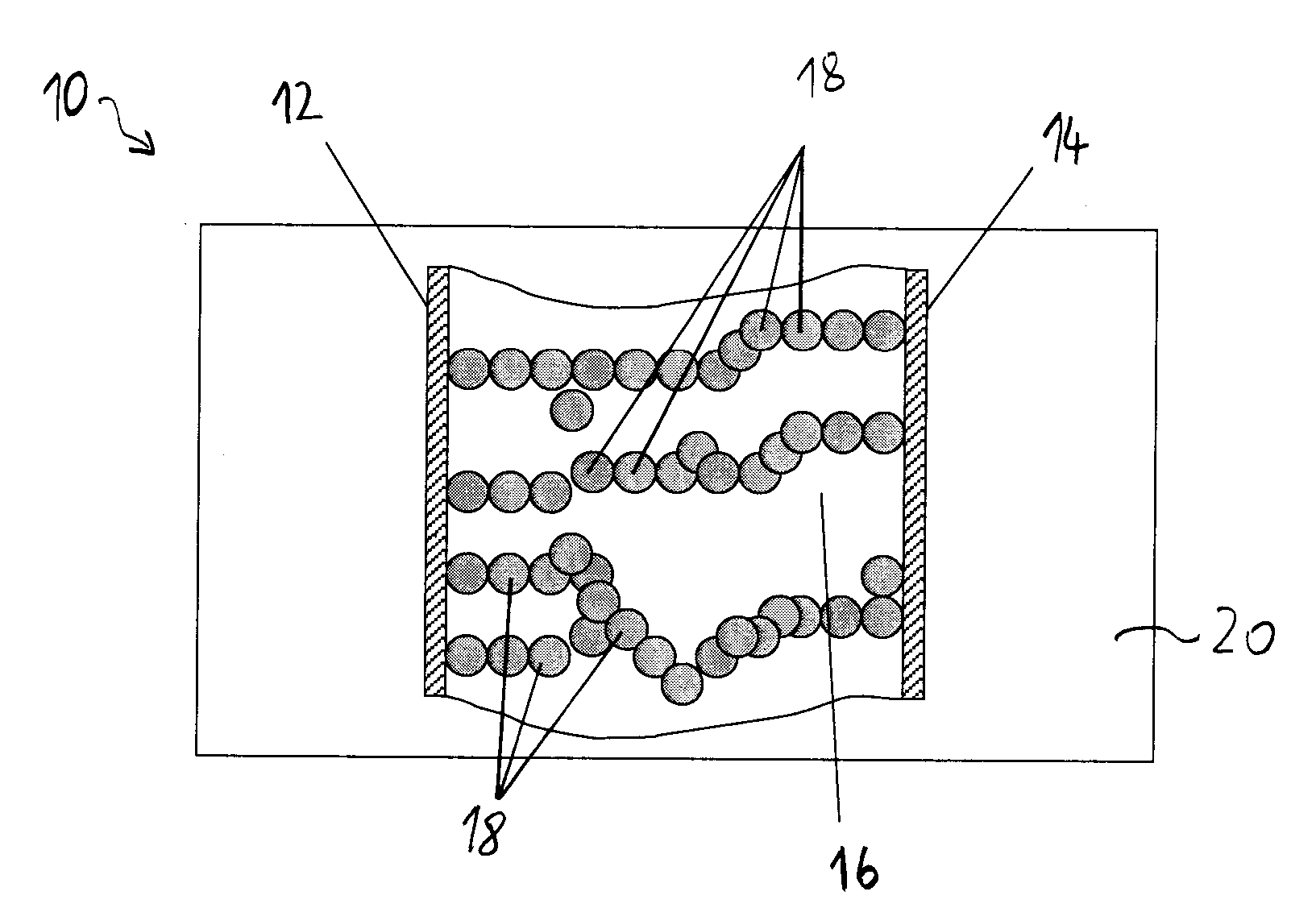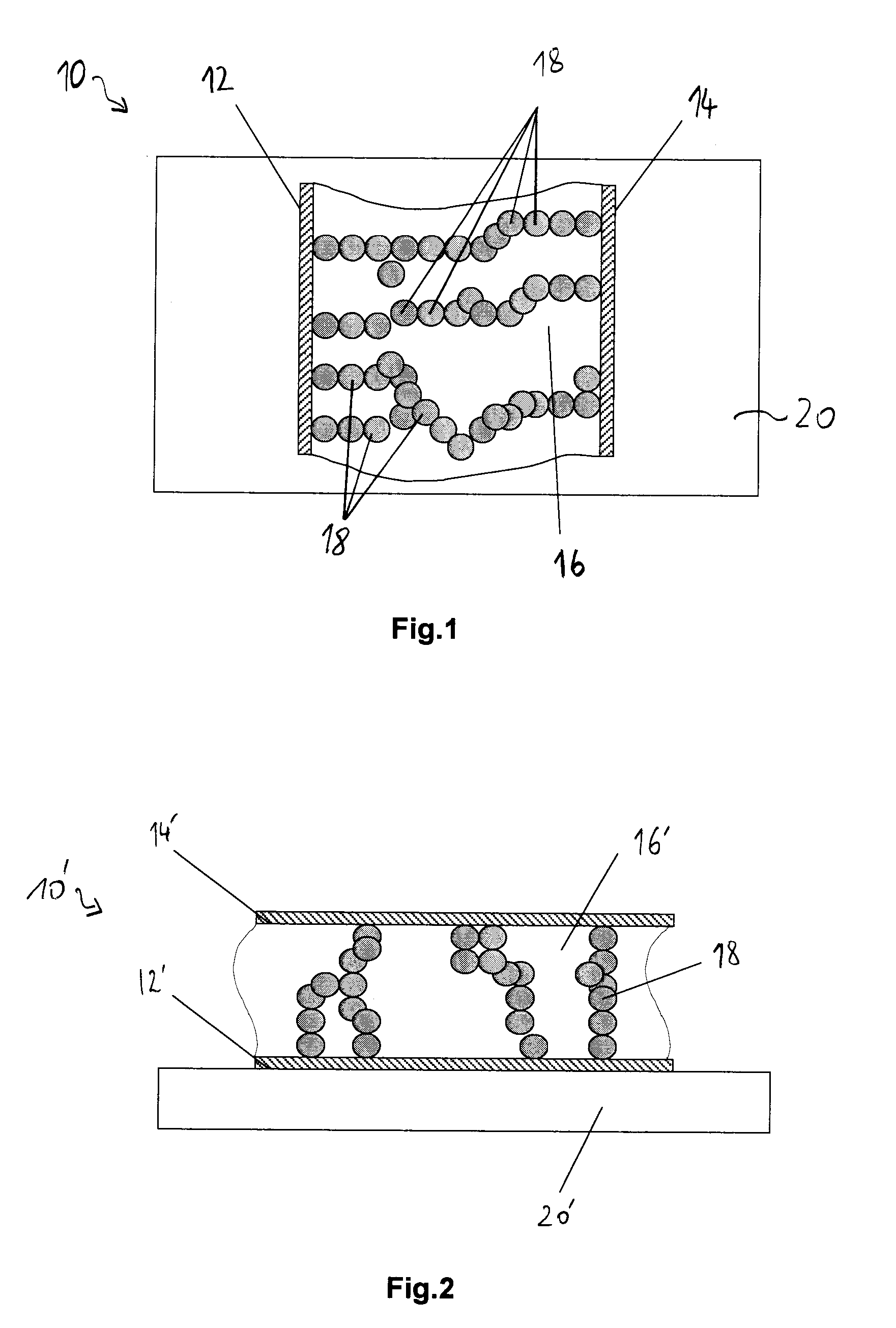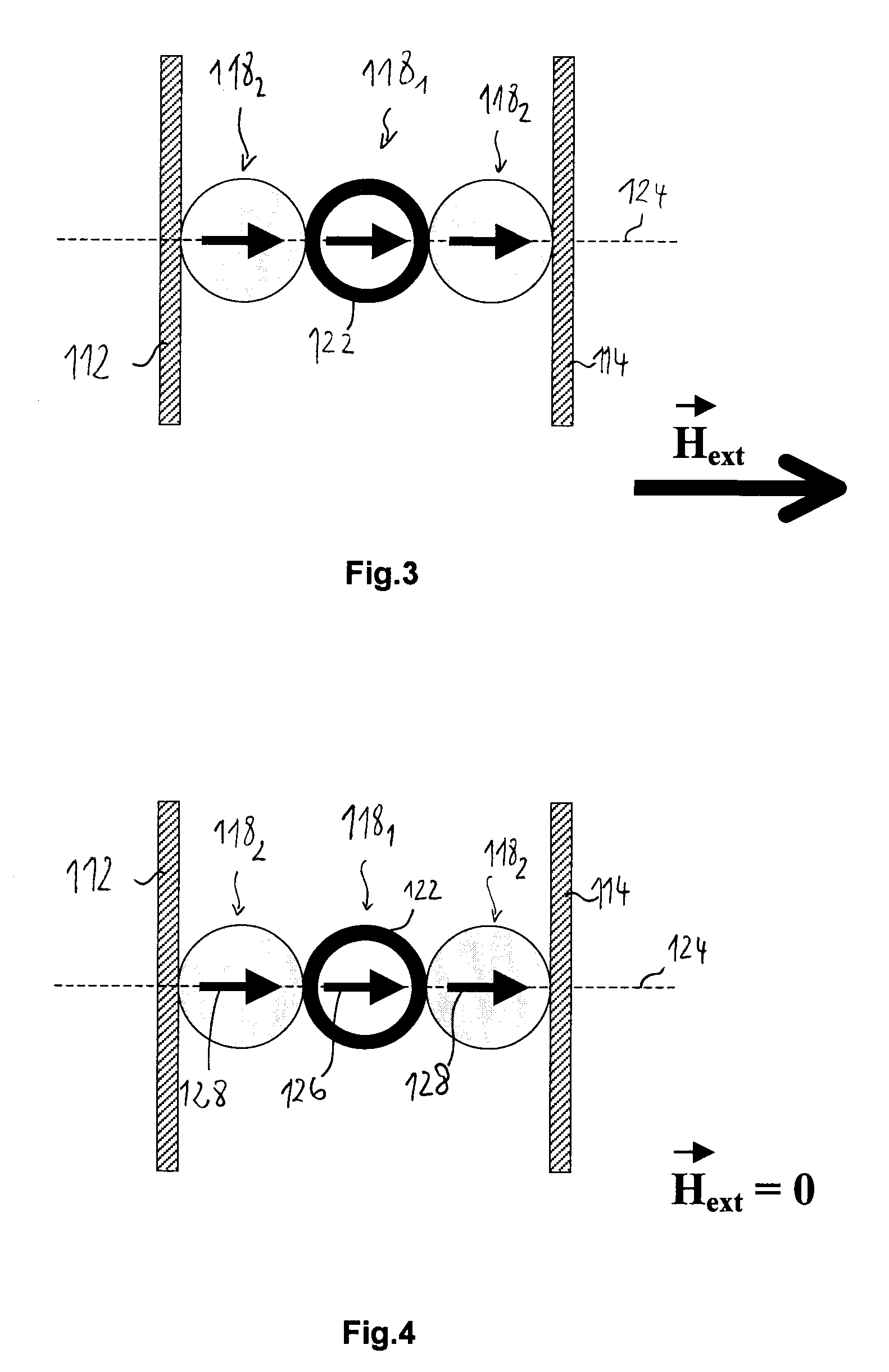Magnetic Field Sensing Element
a magnetic field and sensing element technology, applied in the direction of magnetic field measurement using galvano-magnetic devices, instruments, plasma techniques, etc., can solve the problems of high cost design and equipment, high cost, and high cost of transducer technology, and achieve the effect of detecting time-dependent magnetic fields
- Summary
- Abstract
- Description
- Claims
- Application Information
AI Technical Summary
Benefits of technology
Problems solved by technology
Method used
Image
Examples
first embodiment
[0047]FIG. 1: is a section view, along a plane parallel to the substrate, through a magnetic field sensing element according to the invention;
second embodiment
[0048]FIG. 2: is a section view, along a plane perpendicular to the substrate surface, through a magnetic field sensing element according to the invention;
[0049]FIGS. 3, 4 and 5 are sketches illustrating the working principle of the present magnetic field sensing element based on an exemplary embodiment featuring 3 nanoparticles.
PUM
 Login to View More
Login to View More Abstract
Description
Claims
Application Information
 Login to View More
Login to View More - R&D
- Intellectual Property
- Life Sciences
- Materials
- Tech Scout
- Unparalleled Data Quality
- Higher Quality Content
- 60% Fewer Hallucinations
Browse by: Latest US Patents, China's latest patents, Technical Efficacy Thesaurus, Application Domain, Technology Topic, Popular Technical Reports.
© 2025 PatSnap. All rights reserved.Legal|Privacy policy|Modern Slavery Act Transparency Statement|Sitemap|About US| Contact US: help@patsnap.com



